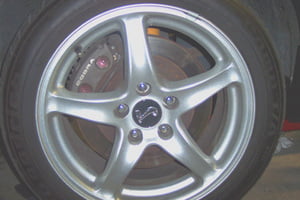Rattling, hissing, roaring, and squealing sound like descriptions of sounds that might come from a wild animal, but these are sounds that can indicate serious vehicle problems. When a vehicle is making strange sounds, that vehicle is trying to communicate that something is wrong. Listen to your vehicle, and when it’s making sounds that aren’t normal, check into the source. You might find out it’s nothing to worry about, but you could find a serious vehicle problem that requires immediate attention.
Whining From Under the Body
The front-drive final-drive, or the rear axle could be the problem if you notice whining sounds from beneath the vehicle at speeds of 20 miles per hour or greater. The noise will increase upon acceleration, or when coasting. Check these areas, and service the vehicle as soon as possible if necessary.
Squeals From Beneath the Hood
More often than not, squealing sounds from beneath the hood is due to loose or worn belts. Check to find out if a belt is responsible for the squealing by spraying it with spray-on belt dressing. If you no longer notice the squealing, the belt was probably responsible for the sound, and it should be changed. Also, visually examine belts for splits, cracks, and glazing. Replace worn or damaged vehicle belts as soon as possible.
Unusual Vibration
Tires out of balance could be the cause of unusual vibrations and sounds at high rates of speed. Pay close attention to when the vibrations occur. If it only happens at higher speeds, this is probably the case. Have your tires balanced as soon as possible. Your vehicle will handle and ride much better as a result.
Vibrations that seem to originate under the seats or flooring could be coming from the vehicle driveline. Have the transmission mounts, front-drive axle, drive shaft, and the vibration damper checked.
Interior vibrations aren’t a safety concern, but the sounds they generate can be very annoying. To find the location of an aggravating vibration, press various places along the dash. Once you find the origination of the vibration, stop the madness and tighten the retaining screws. If tightening the retaining screws doesn’t work, slide sheet rubber under loose areas, and tighten the screws again.
Rattling
Rattling sounds from beneath the vehicle could be coming from the exhaust system. There might be a loose or broken clamp or flange, or part of the exhaust could be coming in contact with the frame. Check for broken clamps or flanges, and secure or replace them as soon as possible before further damage occurs.
Clunking Upon Accelerating and Decelerating
If the universal joints in the front-drive axel shaft or the drive shaft are worn, they could produce rattling sounds upon deceleration or acceleration. If these areas aren’t the problem, check the rear axle or front-drive final-drive unit. These are serious concerns, and the vehicle should be serviced promptly.
Hissing
Hissing sounds from beneath the hood of a vehicle is an indication of a vacuum or air leak. Open the hood and try to pinpoint the location of the leak. A hose could be split or partially disconnected, or the problem could be the vacuum reservoir. If it’s a disconnected hose, the problem can be corrected in a matter of minutes.
Continuous hissing sounds around the area of the air-conditioning/heater unit are probably a result of a disconnected vacuum hose. Simply remove the frame surrounding the unit, and if necessary, remove the panel that covers it. Inspect the unit for a disconnected hose, and securely reconnect it if you find it detached.
Roaring
If you notice roaring sounds originating from the underside of your vehicle, the exhaust system might be to blame, especially if the sounds become louder upon acceleration. Inspect the piping for holes. Even very small holes can create a lot of noise, but they’re easy to patch with patching compound.
Clicking Engine
An engine that continuously clicks might be low on oil. Check the oil level of the vehicle to see if that’s the problem. Otherwise, the sound could be coming from the hydraulic lifters, and they might require servicing. Lifters that aren’t hydraulic may require adjustment after accumulating extensive mileage and wear.
Brake Sounds
Squealing sounds when applying the brakes is often due to worn pads. If your vehicle has accumulated a lot of miles since they were last changed, this could be the problem. Check your brake pads, or have them inspected and replaced by a certified automotive mechanic.
Clunking sounds may be due to worn tires, loose calipers, a loose suspension, or bad shocks. Any problems involving the brakes, related components, and tires should be checked and remedied as soon as possible.
Pinging Engine
Occasional pinging sounds coming from the engine are normal, but a faulty EGR valve or ignition timing controls can cause frequent rattling sounds. Try using high-octane gasoline, and if that doesn’t correct the problem, have a certified auto mechanic check and service your engine.
Excessive Wind Noise
Excessive noise generated by the wind can be aggravating, especially when you can’t pinpoint the location of origin. If the noise seems to be coming from around a window, close the window completely, and apply tape around the edges. If this solves the problem, part of the weather striping is probably missing or worn. Gradually remove the tape to determine the exact location.
A broken or missing section of grille can also cause excessive noise. For a temporary fix, place a piece of tape over the cracked or missing section. Don’t place tape over a large portion of the grille since it could cause the vehicle to overheat. Replace the grille as soon as possible to correct the problem once and for all.


